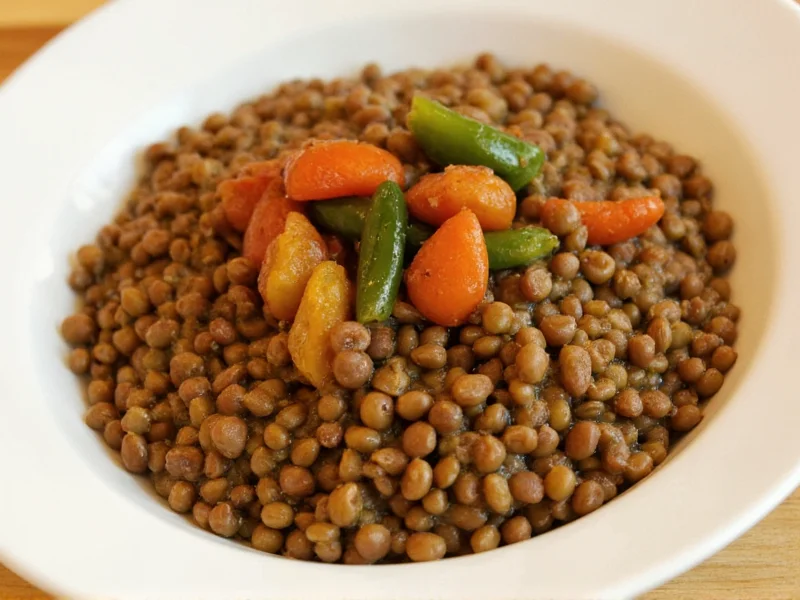Understanding Lentil Varieties and Their Culinary Applications
Lentils represent one of the earliest domesticated crops, with archaeological evidence dating back 8,000-11,000 years. Modern varieties offer distinct textures, cooking times, and flavor profiles that determine their best culinary applications. Understanding types of lentils and their uses helps home cooks select the perfect variety for specific dishes.
| Lentil Type | Color/Appearance | Cooking Time | Best Culinary Uses |
|---|---|---|---|
| Brown/Green | Olive green to brown | 20-30 minutes | Hearty soups, stews, shepherd's pie |
| Red/Yellow | Orange to golden yellow | 15-20 minutes | Dals, curries, purees, salads |
| French/Puy | Steel blue-green | 25-35 minutes | Warm salads, side dishes, casseroles |
| Black/Beluga | Deep black, pearl-like | 25-30 minutes | Caviar substitute, gourmet salads, pilafs |
Nutritional Powerhouse: The Science-Backed Health Benefits
When examining the nutritional benefits of lentils for health, research consistently demonstrates their positive impact on multiple health markers. A single cooked cup (198g) delivers:
- 230 calories with 17.9g protein (36% daily value)
- 15.6g dietary fiber (62% DV) supporting gut microbiome diversity
- 36.9% DV of folate, crucial for cellular function and DNA synthesis
- 24.6% DV of iron (non-heme form requiring vitamin C pairing)
- 21% DV of manganese supporting metabolic function
Studies published in The American Journal of Clinical Nutrition show regular lentil consumption correlates with improved cardiovascular markers, including reduced LDL cholesterol and blood pressure. The low glycemic index (29) makes them particularly valuable for blood sugar management, with research indicating lentils can reduce post-meal glucose spikes by up to 20% compared to equivalent carbohydrate portions from refined grains.
Mastering Lentil Preparation: Techniques for Optimal Results
Unlike many legumes, most lentils require no soaking, but proper preparation enhances both texture and digestibility. The key to how to cook different lentil varieties lies in understanding their structural composition:
Essential Cooking Guidelines
- Rinse thoroughly in cold water to remove debris and reduce oligosaccharides that cause gas
- Use 2.5:1 water-to-lentil ratio for most varieties (except red lentils which need 1.5:1)
- Add acidic ingredients (tomatoes, vinegar) after cooking to prevent toughening
- Season after cooking as salt during cooking can toughen skins
For those concerned about digestive discomfort, combining lentils with digestive herbs like epazote or kombu seaweed can significantly improve tolerance. The lentils digestion and reducing gas challenge often stems from undigested oligosaccharides, which these traditional additives help break down.
Strategic Storage for Maximum Freshness and Nutrition
Proper storage preserves both the nutritional integrity and culinary quality of lentils. Understanding storing lentils for long term freshness involves several key considerations:
- Dry storage: Keep in airtight containers in cool, dark places for up to 12 months
- Refrigeration: Cooked lentils maintain quality for 5-7 days when stored properly
- Freezing: Portion cooked lentils in freezer bags for up to 6 months without texture loss
- Signs of spoilage: Musty odor, discoloration, or insect activity indicate compromised quality
Research from the Journal of Food Science shows that proper storage maintains lentils' antioxidant capacity, with minimal nutrient degradation when protected from light and moisture. This makes them an excellent pantry staple for nutritionally dense meals year-round.
Integrating Lentils into Diverse Culinary Traditions
Lentils' versatility spans global cuisines, making them valuable for best lentils for soups and stews as well as delicate preparations. Consider these traditional applications:
- Middle Eastern cuisine: Red lentils form the base of comforting mujadara (lentil and rice pilaf)
- Indian cooking: Masoor dal (red lentil curry) demonstrates how lentils absorb complex spice profiles
- Mediterranean dishes: French lentils maintain structure in hearty salads with vinaigrettes
- Latin American recipes: Brown lentils substitute for ground meat in tacos and empanadas
For those exploring plant-based nutrition, understanding lentils protein content compared to other legumes reveals their advantage: while similar to beans in protein density, lentils cook faster and generally cause less digestive distress due to lower phytate content.











 浙公网安备
33010002000092号
浙公网安备
33010002000092号 浙B2-20120091-4
浙B2-20120091-4